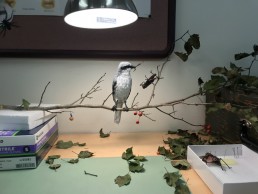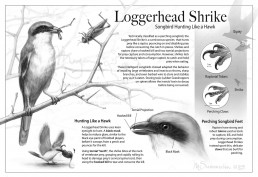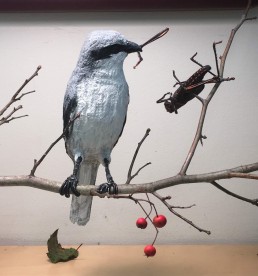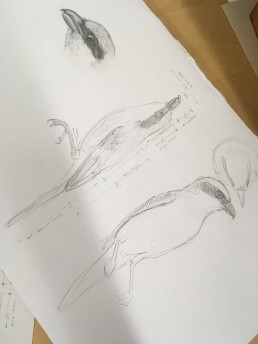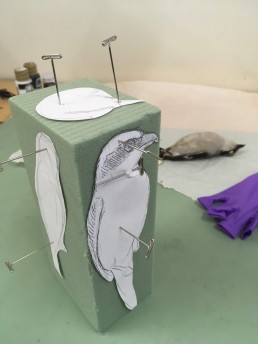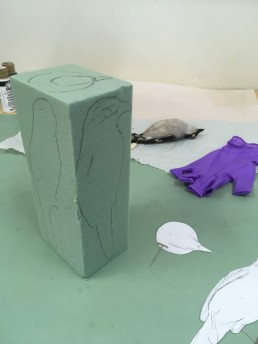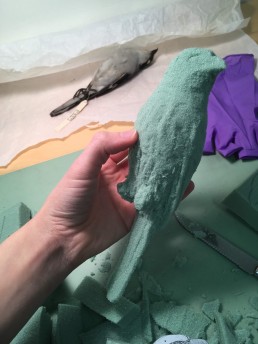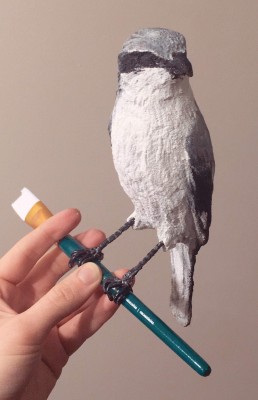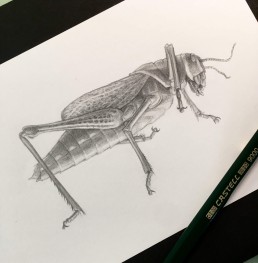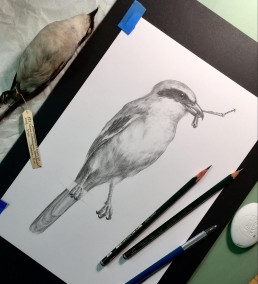Obtaining reference specimens
I was fortunate to have worked from a preserved Loggerhead Shrike skin, on loan from Dr. Jean Woods at the Delaware Museum of Natural History’s Bird Collection. Working from a real specimen is invaluable in illustration—being able to study the details and take measurements of a subject can help with creating an accurate and lifelike illustration.
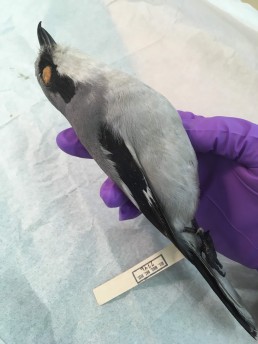
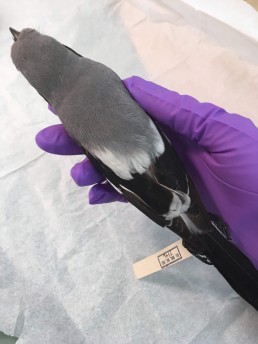
Creating the scale model
I started creating my maquette by first taking measurements of the shrike skin to ensure that the final model will be life-size. Using these measurements and reference photos of perched Loggerhead Shrikes, I sketched a perched shrike in my desired pose from three views: the top, front, and side. I attached these sketches to a floral foam block and began forming the shrike using subtractive sculpture.
Assembling the action scene
Loggerhead Shrikes frequently visit trees with sharp thorns, such as the Hawthorn tree, to consume their prey. My professor kindly cut and donated a handful of branches from the Hawthorn tree in his yard.
I also gathered preserved Lubber Grasshoppers to reference. The first I purchased and pierced on the Hawthorn thorn, and the other, which I used to study features such as tarsal claws and wing venation, was loaned to me by Dr. Mike Ferro at the Clemson University Arthropod Collection (CUAC).
I referenced my maquette and the set up scene for lighting, overall proportions, and spatial relationships. The benefit of working from real specimens is that I was also able to study and incorporate minute details, like feather textures and patterns and important diagnostic features.
